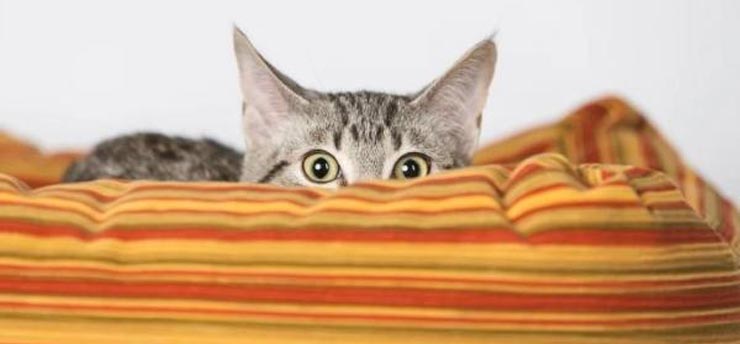Reading Your Pet’s Body Language

Dogs and cats have their own ways of telling us what’s going on. Here are some common behaviors from our furry friends that will help us better understand their needs.
Dogs:
- YAWNING. We may think it’s cute and that they’re telling us they need a nap. However, yawning is a sign of stress and it tells us that the current situation is not something they are enjoying. If you see your pup in a wide-mouth yawn, you should change what is happening to make your dog comfortable. Yawns are often accompanied by lip licking which is also a sign of stress.
- PANTING. Our first instinct is that the dog is hot and that may be true. Read your environment, because panting is also a sign of feeling nervous. To help relieve the nerves, do what you can to change their environment to something more comfortable. And IF it is hot and your dog is panting (assuming we were not in the middle of another cold snap) make sure he is not stressed and has enough water to drink. If it is super-hot, have your dog stand in a bowl of water to cool him down.
- LICKING. Dogs lick themselves and us for many reasons. One may be to clean an area that is irritated like licking salt out of a paw. Licking areas of their body covered in hair and their lips, however, is often a sign of stress. Try to help relieve their stress by changing a factor in the environment that may be causing the stress. Licking their human friends encourages bonding and is a sign of affection.
- EARS. If you see your pups ears are laying flat and back, that is a sign they are stressed or scared. Spend some time with your animal to calm them down by gently and quietly talking to them or rubbing their chest area. This is a great way to de-stress your pup.
Cats:
- TAIL MOVEMENT. A lot can be communicated from a cat through their tail. For example, when the tail is straight up, it means the cat is happy. When their tail is twitching or whipping, that means they are disturbed and should not be approached. A fluffed tail is showing they are scared, and you definitely should not interact with them.
- LICKING. Cats are instinctually clean and they groom themselves regularly to stay tidy and healthy. It can be a sign of stress in cats if they are over grooming or pulling out hair on a specific area of the body.
- SCRATCHING. When cats scratch they leave a physical mark on their environment and also a scent mark from the scent glands in their paws. Scratching also helps cats stretch.
